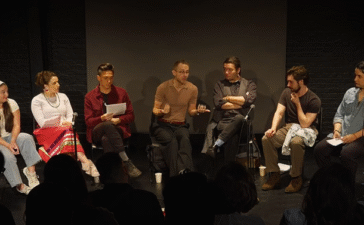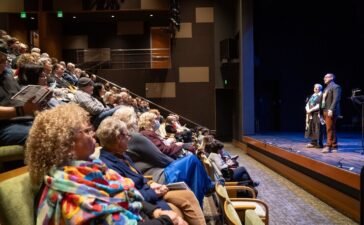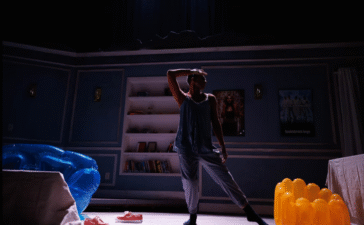Everyone took out booklets, which accounted for the fifty cent to ten dollar contributions they had made, pooling resources to invest in each other’s business and lives—who had borrowed what, what small interest was due the group.
It hit me like a ton of bricks.
Here I’ve been thinking about spaces of home, how we’ve lost all alternative arts spaces to the rise of the “permanent alternative,” how there are no independent artist-run houses anymore.
But home has never been brick and mortar.
Home has always been the set of practices between us.
On every scale—the scale of artist to artist collectivities, and the scale of all of us in this ecosystem: presenters, administrators, artists, funders, producers.
Real talk: people working inside institutions, for a moment—y’all are broke? No? Most of you have unprecedented deficits, no? Even all our sexy friends with their governments who believe in the arts across the various ponds. And even y’all with the structural deficits that are just baked into the math and the reserve funds—the old tools for patching those holes aren’t working. This year, more than most, we’re all out here talking about new works and it feels like the house is on fire and we are chatting about fabric options for new curtains.
The thing we know better than most is that what we do is never done alone.
The danger I see in our global processing of war, our national election year terror, the immediate and existential crisis that is global warming—there is a move right now to get a gun and sit on the porch, proverbially, strap up and go it alone.
But the thing we know better than most is that what we do is never done alone. For live performance more than any other form—we create from collectivity and we give unto collectivity.
Today means something.
It can.
This is an ecosystem; how do we invest in it as such?
Let go of “going it alone.” That is a mighty task for intuitions, particularly 501c3s with boards of devout capitalists with supremist notions of permeance and fantasies of independence.
But all you brilliant humans inside institutions, you are gonna wield these beasts into honoring that we are in an ecosystem.
We are in it together.
Talk about poetry: Under The Radar, home of independent art, becoming independent, and doing so though the ecosystem of many institutions leaning into the interdependence inherent to fostering experimentation.
For every work I start with a question. I build a team to ask that question with me—ideally a lot of different kinds of folks who work in different ways. This is part of why working in international contexts is critical to my practice, why working in different mediums is critical to me.
Lately I’ve been thinking about war—how we process war. Around the world, whether we are in Honduras, or Cox’s Bazaar, or Cairo—we have war on our minds. Being in Rwanda this summer, we are twenty-five years out, and still: individually, collectivity, politically, spiritually—processing war. Art and performance have always been used for this process, for thousands of years: tomb paintings in Luxor, the Iliad, the Ramayana. We have mighty artists today who continue in that tradition, doing this work for our contemporary moment. My next team will gather around these ideas—Ocean Voung, Tuan Andrew Nguyen, Christopher Myers.
When I look into this room at you all, I see the thing I love best: a group of different kinds of people, who work in different kinds of ways, trying to ask some hard questions.
My provocation to you is that lock box. How do we do it together? For ten minutes, may we lay down the mantle of our 501c3 capitalist empires, our individualistic American training, our singularity obsessions, our premieres mentality. And really consider, in unprecedented times, how do we do this together? We are actually good at this. All of us.
Thank you.






